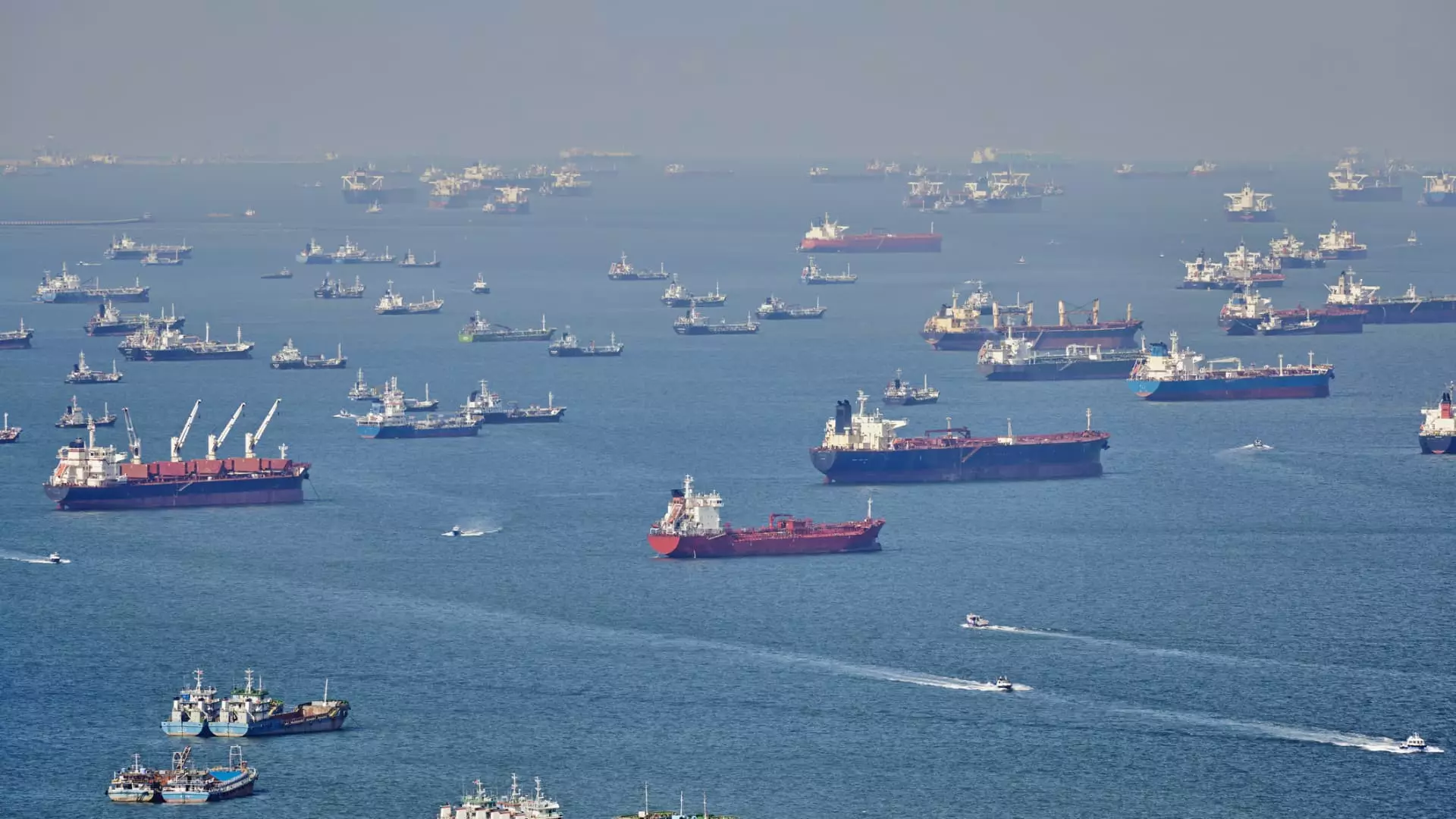The shipping industry is facing a slow summer as shipping routes from Asia to Europe and beyond experience a decline in demand. Traditionally, the holiday season brings a surge in orders and imports, but this year, hopes for a peak season are fading. Companies across various industries, from apparel to electronics, are grappling with excess stock, resulting in a decreased need for shipping products. As a consequence, some vessels are idling in ports due to canceled sailings, also known as “blanked” sailings.
MSC, the world’s largest container company, recently canceled the voyage of the MSC Deila from Asia to northern Europe due to slowing demand on the route. The massive vessel, capable of carrying 14,000 shipping containers, had its sailing canceled for two consecutive weeks. Other major shipping companies have also taken similar measures, such as blanking scheduled sailings. As a result, there has been a noticeable increase in ships parked outside ports, waiting for improved yields.
According to Sanne Manders, President of Ocean and Air at freight broker Flexport, shipping carriers are resorting to “capacity management” by laying up ships. This strategy involves temporarily taking ships out of service due to reduced demand. The recent decline in earnings for large shipping companies reflects the challenging circumstances. CMA CGM reported a 73% decrease in EBITDA for the second quarter compared to the previous year. Hapag-Lloyd also experienced a decline in EBITDA for the first half of the year. Maersk witnessed a significant fall in its second-quarter profits, nearly one-third of its record earnings in the same quarter the previous year.
Shipping companies ordered a record number of vessels after the Covid-19 pandemic left them with significant excess cash. However, this influx of new vessels is a contributing factor to the current challenges in the shipping industry. Bernstein, an investment firm, highlighted that the addition of hundreds of thousands of shipping containers by major shipping lines will likely keep rates from expanding in the near to medium-term. The oversupply of capacity has put severe pressure on freight rates, especially on the Far East to North Europe routes. Niels Rasmussen, Chief Shipping Analyst at the Baltic and International Maritime Council (BIMCO), emphasized that rather than weak volumes, it is the failure of liner operators to adjust ship capacity to actual demand that is the main concern.
Flexport’s survey of customers revealed that high inventory levels are persisting. While inventory levels decreased slightly from March to May, they remained above 40% in July. The electronics, high tech, and clothing industries are particularly affected by excess stock, while furniture companies seem to have the right amount of inventory. There is an expectation that the holiday season will help clear these inventories, but until then, imports are likely to remain modest.
Blank sailings have become a common strategy to balance the container market amid the current demand slump. Excess inventory, coupled with weak retail sales, has contributed to the downturn in shipments. In July, several blank sailings were observed on the Asia to Europe routes. This trend is expected to continue in August and September. U.S. retailers are also grappling with high inventory levels, with $778 billion recorded in May, the highest level since 2019. As a result, the assurance of a peak season is far from certain.
Supply chain management has become more complex as retailers increasingly source from multiple locations in Asia. Retailers now face the challenge of meeting customer expectations for fast delivery, often within a day. To satisfy these demands, retailers need to establish various distribution locations closer to consumers. In the long term, it is predicted that ocean freight volumes will increase while air freight volumes decline. With better-planned supply chains, customers can make a successful transition from air to ocean freight, reducing costs and increasing efficiency.
The shipping industry is currently facing numerous challenges, including a slow summer, excess inventory, and the complexities of supply chain management. The cancellation of sailings and the decrease in demand have led major shipping companies to deal with reduced earnings. The oversupply of vessels, driven by excess cash and insufficient capacity adjustments, is pressuring freight rates. With high inventory levels persisting in various industries, the demand for shipping products remains modest. However, the holiday season may provide some relief by helping to clear inventories. Moving forward, supply chain management will continue to evolve, with a shift towards better planning and a gradual transition from air to ocean freight.


Leave a Reply